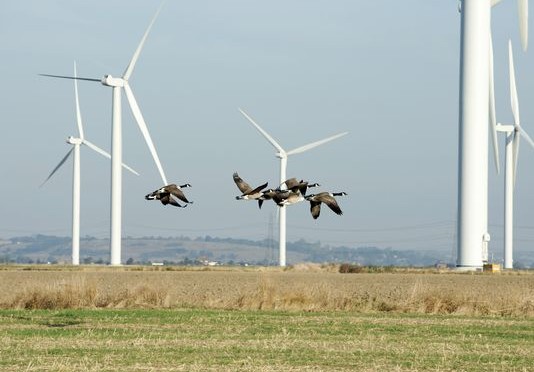Wind power is once again taking the lead on wildlife conservation. At AWEA’s Wind Project Siting and Environmental Compliance Conference, the Wind Wildlife Research Fund (WWRF), an industry-led initiative to pool investment for wind and wildlife solutions, announced support for seven research projects aimed at tackling the industry’s most difficult wildlife challenges. The initiatives are part of the industry’s efforts to maximize wind’s conservation potential.
Garry George, Renewable Energy Director for the National Audubon Society pointed out, “climate change is the biggest threat to birds. In addition to the critical reduction of the emissions that cause climate change, the companies that founded and fund the Fund are committing to conservation outcomes for birds and other wildlife with an investment in good science and research to inform siting and operation of turbines.”
George is right to underscore the role of science and a fact-based approach to wind energy’s relationship to wildlife. According to the most comprehensive analysis to date by the U.S. Fish & Wildlife Service, wind power is responsible for less than 0.01 percent of all human-related bird deaths in the United States. And better siting practices and voluntary research initiatives like the Wind Wildlife Research Fund are helping to drive those numbers lower.
“More so than ever before, the wind industry is coming together to pool resources on targeted priorities,” said Miguel Prado, CEO of EDP Renewables North America. “Together, we can rapidly advance solutions to key challenges for wind energy and wildlife and move technology forward. I am excited to see the wind industry and collaborators share and implement what we learn from this vital research.”
Two of the seven projects will aim to improve understanding of bats’ activity and behavior around wind turbines. Another two will compare the effectiveness and feasibility of proactive operational strategies. The goal is to further reduce bat fatalities.
Two other programs look to improve data collection on eagles affected by wind farms. The research will study ways to reduce collisions at lower costs and refine fatality estimates.
The seventh project receiving WWRF support is an ongoing GPS-collar study of the lesser prairie chicken. The program tracks the birds’ movement around operational wind farms. The goal is to better under the long-term effects of wind development on the species.
“These priority research projects were identified and selected to address information needs for wildlife and monitoring in relation to wind energy impacts,” said Joan Heredia, Senior Director of Environmental Permitting for Enel Green Power North America and Vice Chair of the Fund. “The results will provide science-based solutions that will improve our understanding of impacts and enable us to target conservation efforts.”
Since the WWRF’s launch in late 2018, the Fund has raised $828,000 to invest in promising research projects that can help the industry solve wildlife challenges, improve siting and permitting processes and improve on wind’s already strong environmental record.
The first round of research projects approved for support are down payments on the work WWRF intends to take up. Last month, the Fund released a Request for Proposals for consideration for 2020 funding. The deadline for submissions is May 6th. Winning proposals will be selected in Summer 2019.
Fundraising and recruitment for the Fund is an ongoing effort. Already, the Fund consists of 30 companies representing 54 percent of the installed wind energy projects in the United States. Companies interested in joining this effort should contact Abby Arnold, Executive Director of the AWWI.


